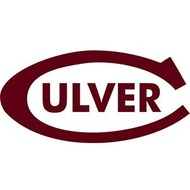
(View Complete Item Description)
Students investigate the endothermic reaction involving citric acid, sodium bicarbonate and water to produce carbon dioxide, water and sodium citrate. In the presence of water [H2O], citric acid [C6H8O7] and sodium bicarbonate [NaHCO3] (also known as baking soda) react to form sodium citrate [Na3C6H5O7], water [H2O], and carbon dioxide [CO2]. Students test a stoichiometric version of the reaction followed by testing various perturbations on the stoichiometric version in which each reactant (citric acid, sodium bicarbonate, and water) is strategically doubled or halved to create a matrix of the effect on the reaction. By analyzing the test matrix data, they determine the optimum quantities to use in their own production companies to minimize material cost and maximize CO2 production. They use their test data to "scale-up" the system from a quart-sized ziplock bag to a reaction tank equal to the volume of their classroom. They collect data on reaction temperature and CO2 production.
Material Type:
Activity/Lab
Author:
Courtney Bonuccelli



















